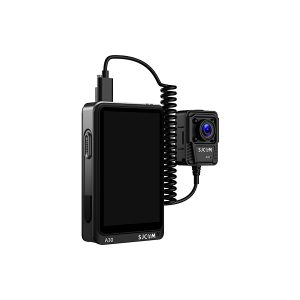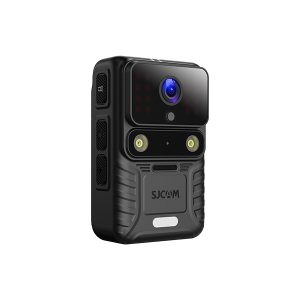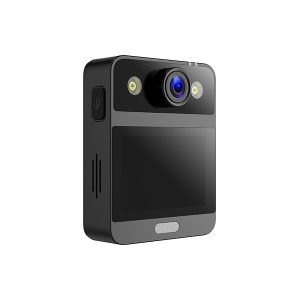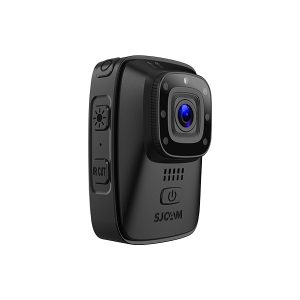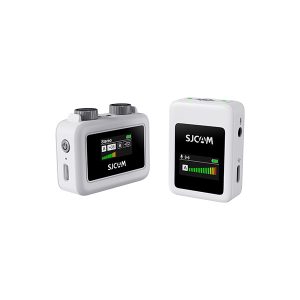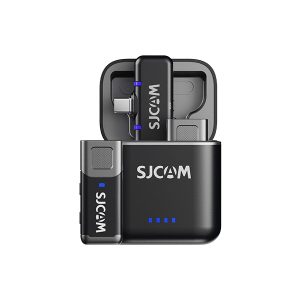A fényképezőgépek képstabilizálása: minden, amit tudnod kell
A képstabilizálás minden fényképezőgép létfontosságú funkciója, különösen akkor, ha akciódús pillanatokat filmez vagy kézi felvételeket készít. Különbséget tehet az éles, tiszta kép és az elmosódott, remegő kép között. Ha fényképezőgép vásárlását fontolgatja, a képstabilizálás működésének és fontosságának megértése elengedhetetlen a helyes döntés meghozatalához.
Ez az átfogó útmutató bemutatja a képstabilizálás részleteit, előnyeit és hátrányait, valamint azt, hogy hogyan befolyásolja fotóit és videóit. Két akciókamerát is ajánlunk, a SJCAM C300 és SJCAM SJ11 Aktív, amelyek kiváló képstabilizációs teljesítményükről ismertek.

Mi a képstabilizálás a fényképezőgépben?
Képstabilizátor (IS) a fényképezőgépekben és objektívekben használt technológiára utal, amely csökkenti a fényképezőgép expozíció közbeni mozgása által okozott elmosódást. Ez különösen fontos gyenge fényviszonyok mellett, hosszú záridővel vagy gyors tempójú forgatókönyvek esetén. Stabilizálás nélkül a kéz enyhe remegése vagy remegése elmosódott képeket eredményezhet.
A képstabilizálásnak két fő típusa van:
Optikai képstabilizátor (OIS):
Ez azt jelenti, hogy a kamera lencséjén vagy érzékelőjén belül fizikailag mozgatják az elemeket, hogy ellensúlyozzák a kamera által érzékelt mozgást. Az OIS különösen hatékony állófotózáshoz, különösen gyenge fényviszonyok között.
Elektronikus képstabilizátor (EIS):
Ez a módszer digitálisan állítja be a képet, hogy kompenzálja a mozgást, gyakran a videó széleinek levágásával. Az EIS-t általában akciókamerákban és videofelvételeknél használják, hogy csökkentsék a kézi felvételek remegését.

Az olyan akciókamerák, mint a SJCAM C300 és SJCAM SJ11 Aktív fejlett EIS technológiát használnak, ami egyenletes, stabil felvételt biztosít még gyorsan mozgó környezetben is.
Mik a képstabilizálás hátrányai?
Bár a képstabilizálás kétségtelenül előnyös, nem mentes a hátrányaitól. Íme néhány lehetséges hátránya a képstabilizálásnak:
Korlátozott használat rendkívül gyenge fényviszonyok között:
Bár a képstabilizálás segít ellensúlyozni a kisebb rázkódásokat gyenge fényviszonyok mellett, előfordulhat, hogy nem szünteti meg teljesen az elmosódást, ha nagyon gyenge környezetben fényképez. Ilyen esetekben szükség lehet állványra vagy gyorsabb objektívre.
Csökkent képminőség az EIS segítségével:
Az elektronikus képstabilizálásnál a kamera levágja a keret széleit, hogy stabilizálja a videót. Ez valamivel szűkebb látómezőt és bizonyos esetekben a képminőség romlását eredményezheti, különösen túlzott használat esetén.
Hozzáadott költség:
A fejlett képstabilizáló rendszerrel rendelkező kamerák, különösen azok, amelyek OIS-sel és EIS-sel is rendelkeznek, általában drágábbak, mint a nem. Figyelembe véve azonban a jobb felvételi minőséget, ez a befektetés gyakran megéri akciós vagy gyenge megvilágítású fotósoknak.
E kisebb hátrányok ellenére számos kamera, köztük olyan akciómodellek, mint a SJCAM C300 és SJ11 Aktív, hatékony képstabilizáló rendszereket használnak, amelyek nagymértékben javítják az általános videó- és fényképminőséget.
Valóban szükségem van képstabilizálásra?
A képstabilizálás szükségessége nagyban függ attól, hogyan kívánja használni a fényképezőgépet. Ha gyakran fényképez kézben, különösen mozgásban vagy gyenge fényviszonyok között, a képstabilizálás kritikus fontosságú.
Íme néhány forgatókönyv, ahol a képstabilizálás jelentősen javíthatja az eredményeket:
Akció- és sportfotózás:
Akár mozgó járműről filmez, akár pörgős sportokat rögzít, a fényképezőgép bemozdulása elkerülhetetlen. A képstabilizátor segít simább, tisztább felvételek készítésében.
Vlogging:
Azon tartalomkészítők számára, akik gyakran mozognak felvétel közben, a képstabilizátor gondoskodik arról, hogy videóik ne remegjenek.
Utazási fotózás:
Ha mozgásban van, csak néha kényelmes háromlábú állványt cipelni. A fényképezőgépben található képstabilizátor segítségével éles fényképeket és videókat készíthet dinamikus környezetben.
Például a SJCAM C300, fejlett stabilizálásával fantasztikus választás vloggereknek és utazóknak egyaránt. Stabilizációs rendszere lehetővé teszi, hogy séta, futás vagy akár kerékpározás közben is filmezzen anélkül, hogy a felvételen jelentős remegések keletkeznének.
Ha azonban elsősorban álló helyzetből, állvánnyal vagy jól megvilágított körülmények között fényképez, előfordulhat, hogy a képstabilizálás nem olyan kritikus.
A képstabilizálást be vagy ki kell kapcsolni?
A képstabilizálás be- és kikapcsolása a fényképezési körülményektől függ:
Kapcsolja be a képstabilizálást:
Ha kézből fényképez, különösen, ha nagy a mozgás.
Ha hosszú zoomobjektíveket használ, vagy gyenge fényviszonyok mellett fényképez állvány nélkül.
Akció- vagy kalandfilmezéshez, ahol a kamera bemozdulása szinte elkerülhetetlen.
Kapcsolja ki a képstabilizálást:
Tegyük fel, hogy állványt használ. A stabil platformnak köszönhetően a kamerának nem kell kompenzálnia a mozgást, és a stabilizálás bekapcsolva hagyása szükségtelen mikroeltolódásokat eredményezhet, amelyek rontják a képminőséget.
Szándékos pásztázáskor, mint a professzionális videózásban, ahol a fényképezőgépnek simán kell követnie a mozgó témát, a képstabilizátor megpróbálhatja ellensúlyozni ezeket a mozgásokat, természetellenes hatást keltve.
A SJCAM C300 és SJCAM SJ11 Aktív rugalmas stabilizációs beállításokat kínálnak, amelyek lehetővé teszik a képstabilizálás be- vagy kikapcsolását a fényképezési stílustól és igényeitől függően.
Befolyásolja a képstabilizálás a videó minőségét?
A képstabilizálás, különösen videó módban, észrevehető hatással lehet a felvétel minőségére, de az, hogy ez a hatás pozitív vagy negatív, attól függ, hogyan alkalmazzák.
Pozitív hatások:
Megfelelő használat esetén a képstabilizátor jelentősen javíthatja a videó minőségét azáltal, hogy kiküszöböli a nem kívánt mozgást és remegést. Az akciósorozatoknál ez simább, könnyebben megtekinthető felvételt eredményez. Olyan kamerákkal, mint pl SJCAM C300, amely továbbfejlesztett EIS-t használ, stabil, jó minőségű videót kap még mozgás közben is.
Lehetséges hátrányok:
Az elektronikus képstabilizálás gyakran magában foglalja a kép levágását, hogy stabil maradjon. Ez kissé csökkentheti a felbontást és a látómezőt, különösen az ultraszéles látószögű felvételeknél. Ez azt jelenti, hogy a modern kamerák, mint a SJCAM SJ11 Aktív fejlett algoritmusokat alkalmaz, hogy minimalizálja ezt a hatást, minimális minőségromlást biztosítva, miközben stabil felvételt biztosít.
Mennyire fontos a képstabilizátor?
A képstabilizátor fontosságát nem lehet túlhangsúlyozni, különösen azok számára, akik gyakran videóznak vagy fényképeznek útközben. A jó képstabilizáló rendszer számos fontos előnnyel jár:
Fokozott élesség:
A stabilizátorok segítenek mozdulatlanul tartani a fényképezőgépet hosszabb expozíció esetén is, ami élesebb, részletgazdagabb képeket eredményez.
Jobb teljesítmény gyenge fényviszonyok között:
A kézmozdulatok hatásának minimalizálásával a stabilizálás lehetővé teszi, hogy lassabb záridővel készítsen felvételt anélkül, hogy elmosódást okozna, ami nagyon fontos gyenge megvilágítás esetén.
Továbbfejlesztett videó simaság:
A videókészítők számára a képstabilizálás létfontosságú annak biztosításához, hogy a felvételek ne legyenek remegőek, különösen nagy mozgású tevékenységek, például kerékpározás, síelés vagy akár gyaloglás közben.
Mind a SJCAM C300 és SJCAM SJ11 Aktív fejlett stabilizációs technológiával vannak felszerelve, amely ideálissá teszi azokat a kalandkeresők és tartalomkészítők számára, akiknek megbízható teljesítményre van szükségük különböző környezetekben.
A megfelelő képstabilizáló kamera kiválasztása
Ha erős képstabilizáló képességekkel rendelkező fényképezőgépet keres, elengedhetetlen, hogy mérlegelje fényképezési igényeit. Ha gyors tempójú tevékenységeket szeretne rögzíteni, akkor az elektronikus stabilizátorral ellátott akciókamera remek választás. Ha elsősorban állóképeket készít, az optikai stabilizálás fontosabb lehet.
SJCAM C300: Sokoldalú stabilizáló kamera
A SJCAM C300 egy akciókamera, amelyet a stabilizálást szem előtt tartva terveztek. A következőket kínálja:

6 tengelyes giroszkóp alapú EIS:
Ez a fejlett elektronikus stabilizáló rendszer kisimítja a remegő felvételeket, így még gyorsan mozgó körülmények között is éles videóminőséget biztosít.
Vízálló és robusztus kialakítás:
A szabadban való használatra készült C300 tökéletes olyan kalandorok számára, akiknek megbízható stabilizálásra van szükségük minden környezetben.
Kompakt méret:
Erőteljes stabilizálása ellenére a C300 továbbra is könnyű és kompakt, ideális utazók, vloggerek és akciósportok szerelmesei számára.
SJCAM SJ11 Active: Megfizethető, mégis erőteljes stabilizátor
A SJCAM SJ11 Aktív egy másik nagyszerű lehetőséget kínál azok számára, akik robusztus képstabilizálásra vágynak anélkül, hogy tönkretennék. A következőkkel büszkélkedhet:

Elektronikus képstabilizátor:
Az EIS sima, rezgésmentes videózást biztosít, így tökéletes extrém sportokhoz vagy hétköznapi kalandokhoz.
4K videofelvétel:
A stabilizátorral párosulva az SJ11 kiváló minőségű felvételeket készít, amelyek nagyszerűen mutatnak nagyobb képernyőkön.
Széleskörű kompatibilitás:
A C300-hoz hasonlóan jól működik különféle rögzítőkkel és tartozékokkal, így biztosítva, hogy a tevékenységtől függetlenül stabilizálja a felvételeit.
Következtetés: Hozza ki a legtöbbet fényképezőgépéből a képstabilizátorral
A képstabilizálás kritikus funkció mindazok számára, akik javítani szeretnék fényképeik és videóik minőségén, különösen útközben. Legyen szó akciósport-rajongóról, utazási vloggerről vagy valakiről, aki szereti a kézi fotózást, a képstabilizátor mindent megváltoztathat.
Mind a SJCAM C300 és SJCAM SJ11 Aktív kiváló választás, nagy teljesítményű képstabilizátort kínálnak megfizethető áron. Biztosítják, hogy a felvétel sima és tiszta maradjon, függetlenül a felvételi környezettől. Tehát, ha megbízható, kiváló minőségű fényképezőgépet keres a következő kalandjához, érdemes ezeket a modelleket megfontolni.
Ha robusztus képstabilizátorral rendelkező fényképezőgépet választ, magabiztosan örökítheti meg kalandjait, tudva, hogy a felvételei ugyanolyan lenyűgözőek lesznek, mint az átélt pillanatok.







 Tmall Áruház
Tmall Áruház Jingdong üzlet
Jingdong üzlet Aliexpress áruház
Aliexpress áruház Amazon Store
Amazon Store















